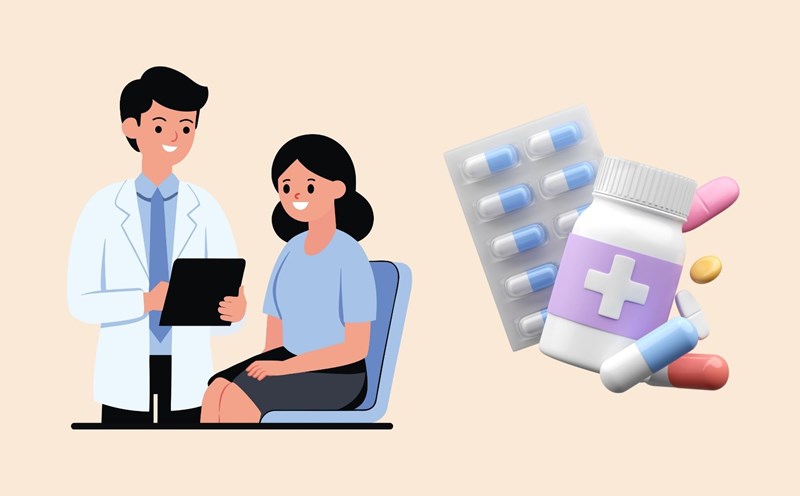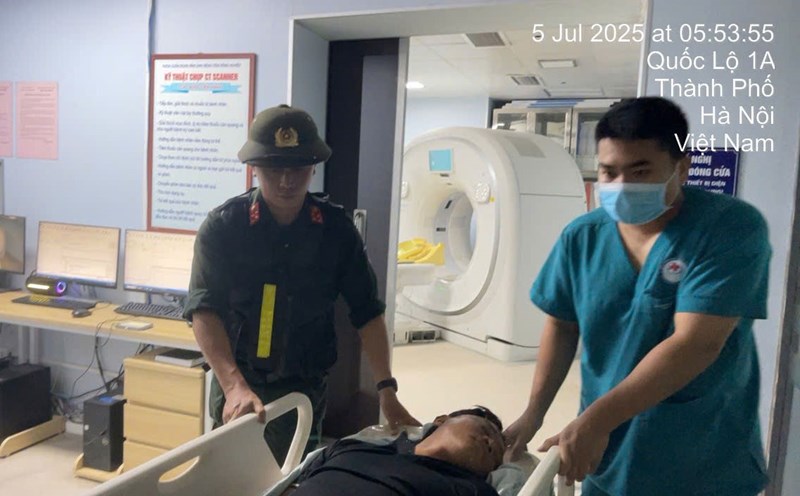With the birth of the Circular, doctors are not "circumventing the law"
The Ministry of Health has just issued Circular 26/2025/TT-BYT dated June 30, 2025 on prescribing pharmaceuticals and biological products for outpatient treatment, effective from July 1. Accordingly, people with some chronic diseases will be prescribed medicine for a maximum of 90 days, instead of only 30 days as prescribed in Circular 52/2017. This is considered an important change to facilitate patients.
"The rigid regulation of only allowing for examination and medicine once a month is causing many inconveniences for both doctors and patients with stable chronic diseases. This regulation increases the number of health insurance examinations at public hospital clinics, creating an overload situation.
Doctors have to work until noon, many people have to work hard to see a doctor continuously for more than 12 hours. Patients, especially the elderly, have to travel many times for testing, waiting for the results, prescribing and then lining up to receive medicine. Many people are tired of sleeping on chairs waiting until early afternoon to complete the procedures," said Mr. Tran Van Hong in Ninh Binh province, sharing that every month they have to go to the doctor to get diabetes medicine.
Concerns about lower-level hospitals when providing long-term chronic drugs
Sharing about her monthly journey to get medicine, Ms. Le Thi Ninh (wishing to keep her address hidden) said: Every month, she has to go for a check-up at two hospitals, one of which is a health insurance registration facility. Every time she came to the clinic, she witnessed a prolonged and unreasonable overload. Most patients come to get insurance drugs, many people have had stable test results for many consecutive examinations but still have not been given an extension of the review appointment time.
The medical examination and treatment process is still heavy in procedures and paperwork. Patients are forced to move continuously from one counter to another, just to continue waiting in line. Many elderly people are struggling to collect thick records because the hospital has not issued separate cards to manage medical examination and treatment data.
It is easy to see that general practitioners are very slow in processing medical records. Each examination was long, when the prescription was issued, I only copied the prescription from the previous month without daring to adjust or make other decisions. The mechanism has "dethroned" lower-level hospitals in long-term drug supply, but if the medical team lacks determination, fearing that the situation of monthly re-examination appointments will continue to be popular, causing unnecessary pressure on both doctors and patients.
Associate Professor, Dr. Nguyen Lan Hieu, Director of Hanoi Medical University Hospital shared: "For a long time, I have been scheduled for a follow-up visit for chronic diseases such as high blood pressure, diabetes... for more than a month. The most difficult thing is the Ministry of Health's regulation of not prescribing for more than 30 days, which makes my pharmacists dare not to prescribe/sell more drugs.
I had to think of a way to prescribe medicine for daily use and wrote at the end of the prescription the words: " Drink fully according to the instructions until re-examination". So patients and pharmacies understand to have enough drugs for 3, 6 months or even 1 year (if there are no special developments) until re-examination".
"The reason is that if you review every month, you will not see any results, but it will take time, money (testing, ultrasound, electrocardiography, X-ray...) and especially cause virtual overload in hospitals. Circular 26 was issued, regulating the prescription of drugs for more than 30 days for chronic diseases. My colleagues and I no longer have to "circumvent" the law" - Associate Professor Hieu said.
Associate Professor, Dr. Nguyen Lan Hieu also wondered: The biggest concern is autonomous hospitals, especially at the district level when the number of outpatients will certainly decrease significantly in the coming months. Abolish the autonomy of district and remote hospitals, pay salaries to grassroots public health workers as the education sector is doing.
When patients only have to go to the hospital three times a month, the daily number of medical examinations and treatments at lower-level facilities will certainly decrease sharply. This means that the revenue from medical examination, testing, and prescriptions is also lost, pushing hospitals into complete autonomy or partial autonomy in a difficult situation.











